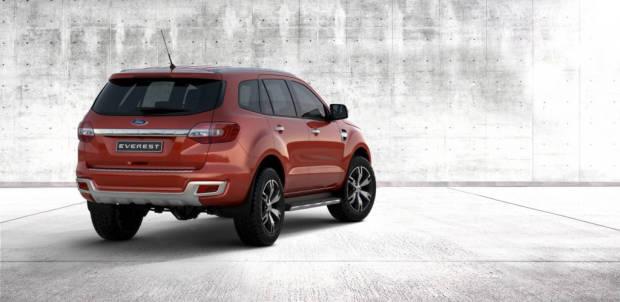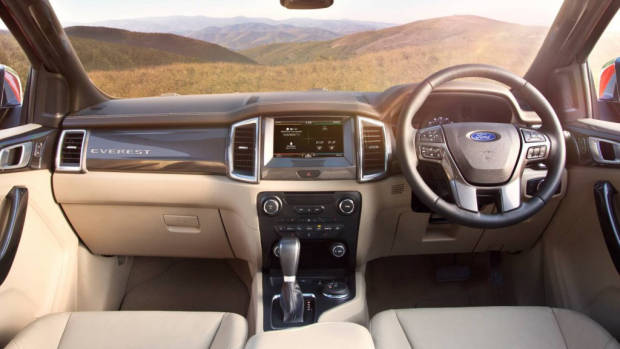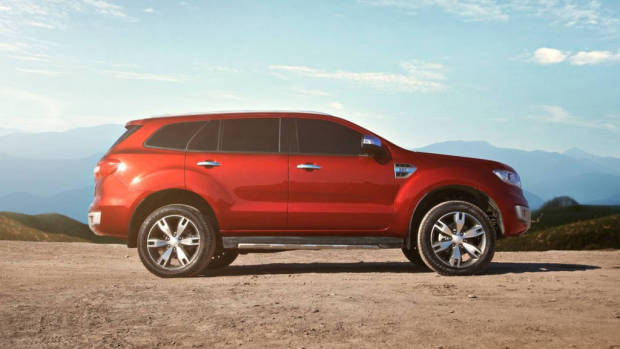-
Car Reviews
- Car News
-
Car Comparisons
Latest comparisons
- Chasing Deals
October will see the launch of the Ford Everest, a Ranger ute-based SUV that will compete with the Toyota LandCruiser Prado with a range spanning $54,900 to $76,990. Designed and engineered by Ford’s Australian teams, the Everest solidifies the importance of local engineering talent in the development of future Fords.
Launching alongside the facelifted PX Ranger Mark II, Ford are equally bullish about the Everest’s chances, positioning it as a more premium, but cut-price alternative to the Toyota Prado (watch our review here). Though the flagship Ford Everest, coined the Titanium, will be the most expensive Ford in their Australian range by over $17,000, that model will undercut the Prado Kakadu in its sights by a factor of $7,500.
Ford claim the Everest has at least ten features the Prado can’t compete with, including 500kg more braked towing capacity—three tonnes in total; the brand’s Sync infotainment system with voice control; semi-automatic parking assist; lane keeping assist; and a power tailgate, among others.

The Everest will only be available with a slightly detuned version of the Ranger ute’s 3.2-litre five-cylinder turbodiesel. It will make 143kW and 470Nm—60Nm ahead of the current Toyota D4D three-litre in the Prado, though the forthcoming 2.8-litre four-cylinder in the updated Prado will narrow the gap (read the details here). A six-speed automatic will be the exclusive transmission, though four-wheel drive will be standard. Other off-roading goodies standard on the Everest include a locking rear differential, a four-mode terrain management system, and hill start and descent control.
Equalling the Ranger’s 800mm wading depth, the Everest also promises 225mm of ground clearance, plus an approach angle of 29 degrees, a ramp-over angle of 21 degrees, and a departure angle of 25 degrees.
The features and price of the Ford Everest 2016 depend on which of the three models you opt for.
The base car, simply named Everest ($54,990), packs 17-inch alloys, automatic headlights, a reversing camera and rear parking sensors, but it makes do with the old Ford Sync 1 infotainment system and manual air conditioning.

Upgrading to the mid-spec Trend ($60,990) is a $6,000 proposition in itself, but buys more kit: the newer, better Sync 2 infotainment system with voice control; two USB ports; the MyKey smart key system; adaptive cruise control with forward collision alert; a head-up display; and lane keeping assist.
The flagship Titanium ($76,990) is $16k more than the Trend, though the feature list does grow to include bright HID headlamps, a panoramic sunroof, semi-automatic parking, eight-way power adjustable front seats with adjustable lumbar, satellite navigation, blind spot monitoring, cross-traffic alert, and a tyre pressure monitor.
Ford Ranger 2015: Australian price
All prices are before on-road costs.

Latest news
About Chasing cars
Chasing Cars reviews are 100% independent.
Because we are powered by Budget Direct Insurance, we don’t receive advertising or sales revenue from car manufacturers.
We’re truly independent – giving you Australia’s best car reviews.